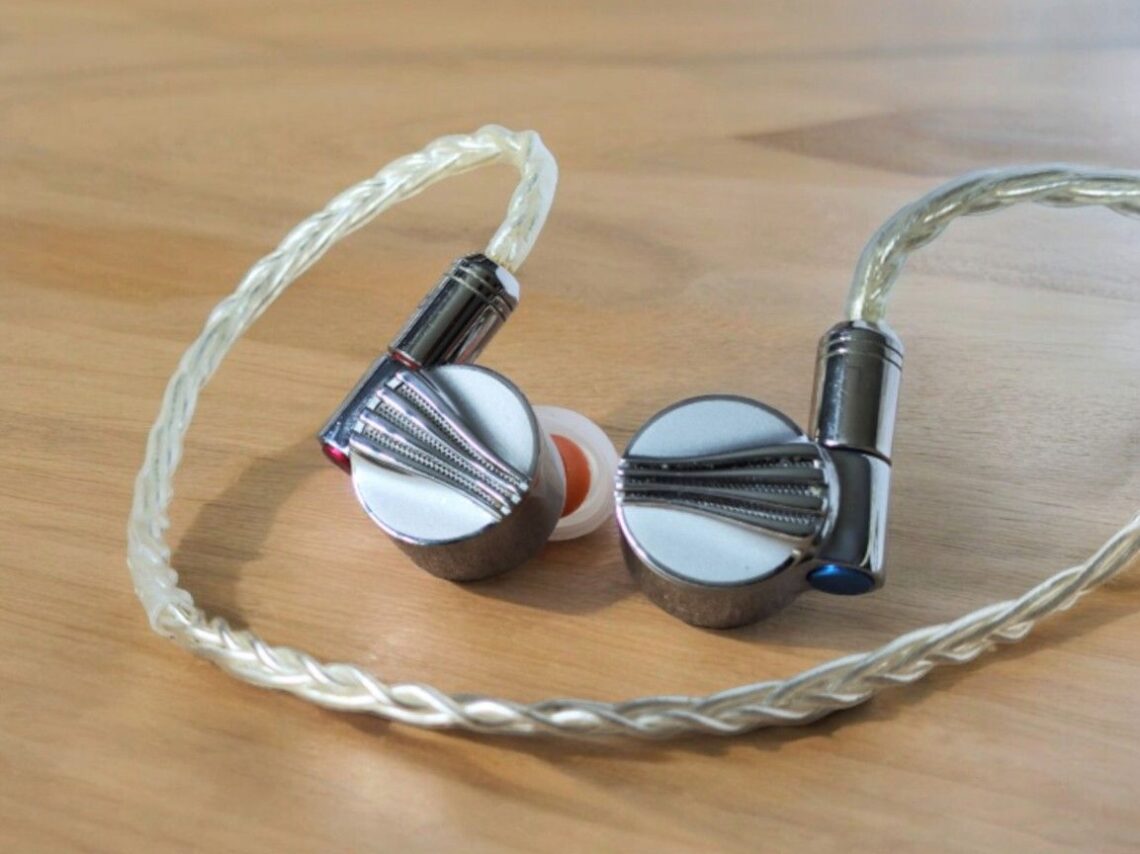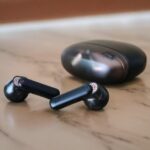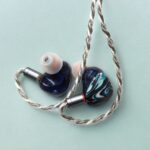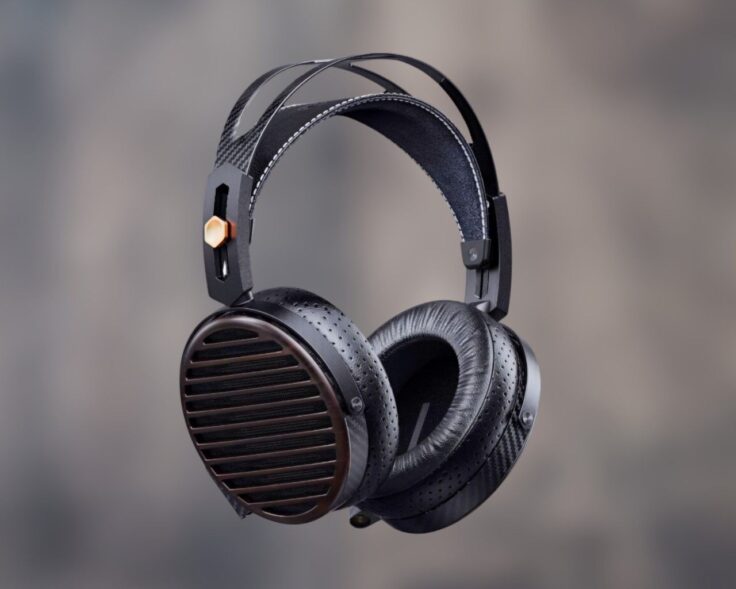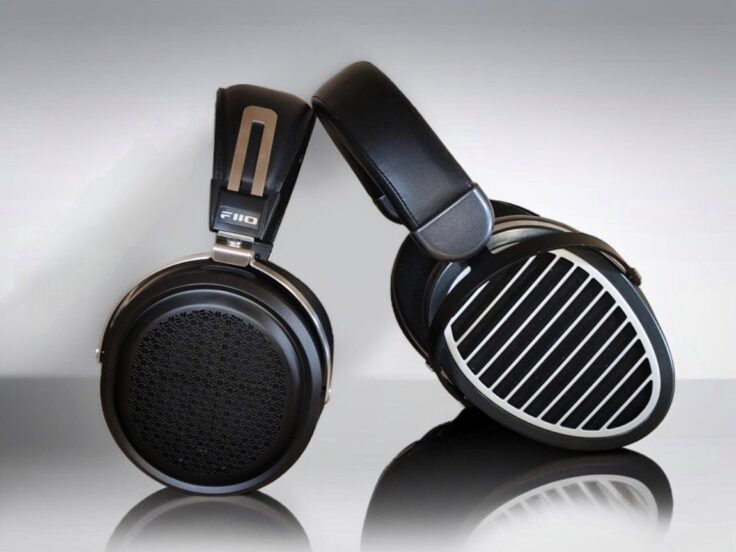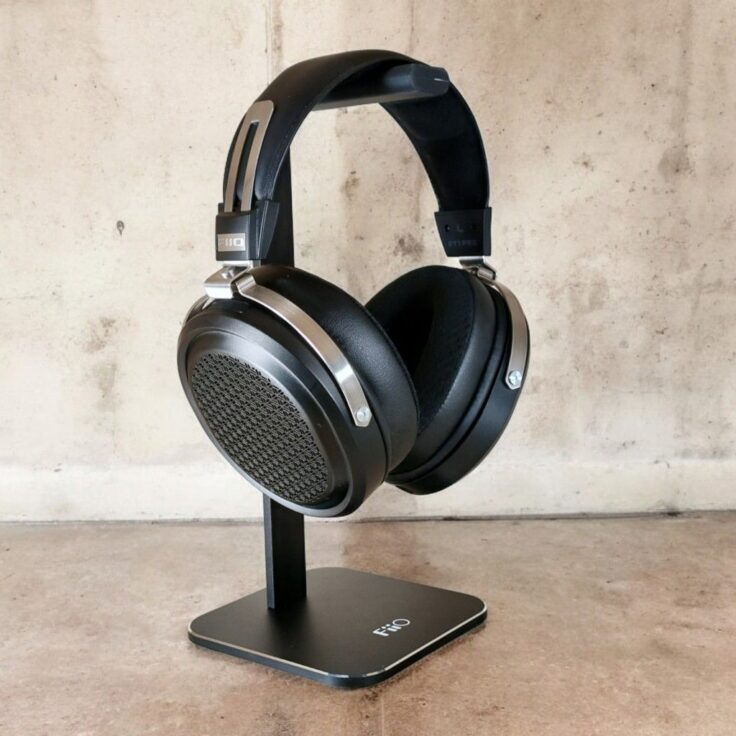Detailed warmth in a beautiful housing.
The FiiO FD5 is a high-end single dynamic driver in-ear monitor earphone. It embodies a single large 12mm dynamic driver inside an all metal housing. Launched in 2021, it is not the newest kid on the block. It’s still available in many stores, but sadly no longer in production. It sits between the FD3 and the FD7 in FiiO’s single dynamic driver hierarchy. The FD7 is black, otherwise identical looking to the FD5. It was launched in 2022, equipped with pure beryllium drivers. The FD7 has also been discontinued. The FD3 and the FD3 PRO are still a part of the official FiiO 2024 product lineup.
The complete dynamic single driver line from FiiO is currently JD1, JD3, FD3, FD3 PRO, FD11, and the soon too be released FD15, which is claimed to be heavily inspired by the FD5. All these earphones are in a lower price range than the FD5 and FD7. FiiO seems to have gone for multi-driver earphones for their higher end options.
The FD5 driver utilizes a N52 neodymium magnet, providing 1.5 Tesla magnetic flux (strength). Together with a copper-coated aluminum coil, it controls a diaphragm made of a material called diamond-like carbon (DLC), which is covered with beryllium. This combination makes for a very rigid and light diaphragm. On the backside of the driver, there is a “volcanic field system” to reduce standing waves. In front of the driver is an acoustic prism to correct for phase mismatches. All this fits inside an elegant circular stainless steel housing that is designed to minimize resonances. The design is semi-open with small vent holes in the back to increase acoustic performance as well as reduce discomfort for the user, although at the cost of slightly reduced sound isolation.
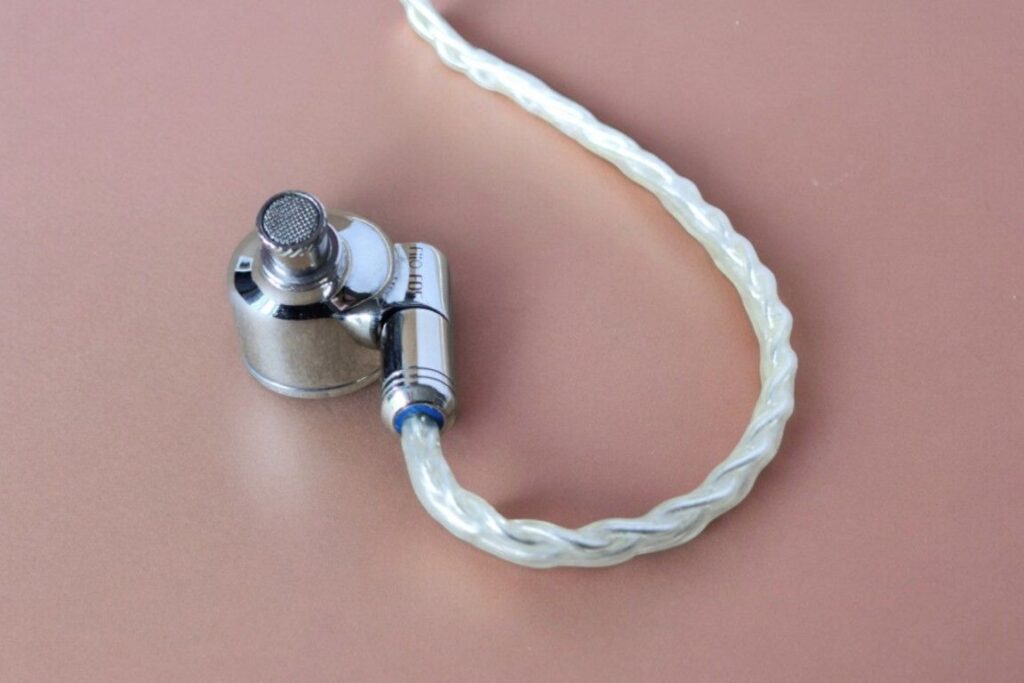
When the FD5 was launched in 2020/21, beryllium-coated DLC diaphragms weren’t commonplace. However, these days, much cheaper earphones also use such diaphragms. The world of IEMs moves fast, but as you will see, the FD5 is far from outdated, at least in my humble opinion.
The FD5 comes in a luxurious-feeling package. Inside the big box are a storage box, a good selection of quality tips, a cable, and two pairs of steel nozzles.
One of the nozzle pairs is mounted on the FD5, and it’s a normal barrel size. The supplied extra set has a much narrower opening, and it’s designed to increase the bass quantity.
The FD5 comes with a high-purity monocrystalline silver-plated copper cable. On the earphones, there are MMCX connectors. The termination on the other end is interchangeable, and you can choose between a 4.4 or 2.5mm balanced connector or a 3.5mm single-ended connector.
The supplied ear tips are very nice, and there are different types of silicone tips with different acoustic properties, as well as foams and 3-flange deep bore tips. There are three sizes of each type.
Even though the FD5 is circular and clearly designed with acoustics and aesthetics in mind, I find it quite comfortable to wear. When it comes to build quality, the FD5 feels truly excellent.
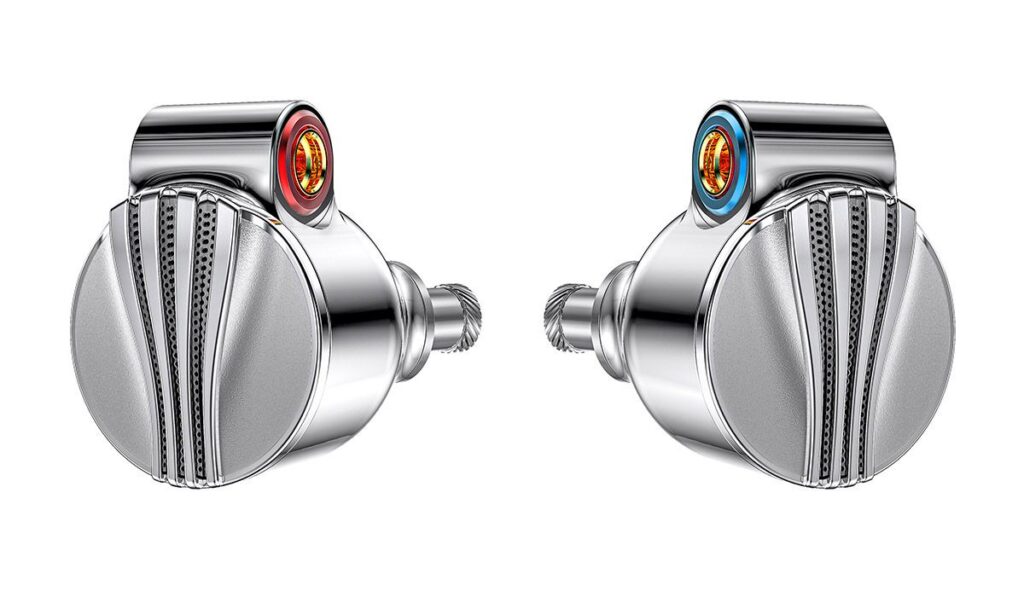
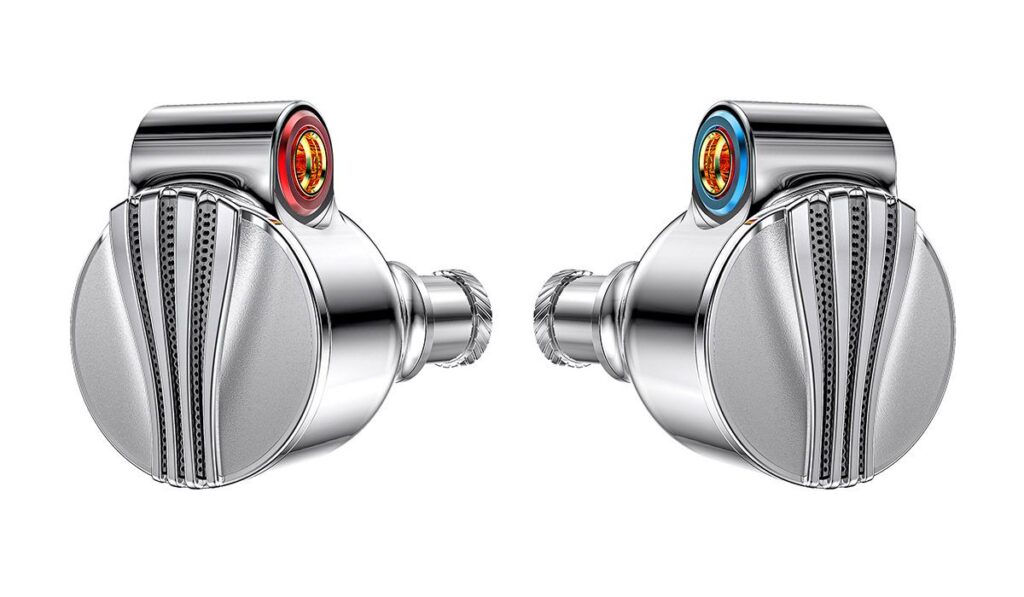
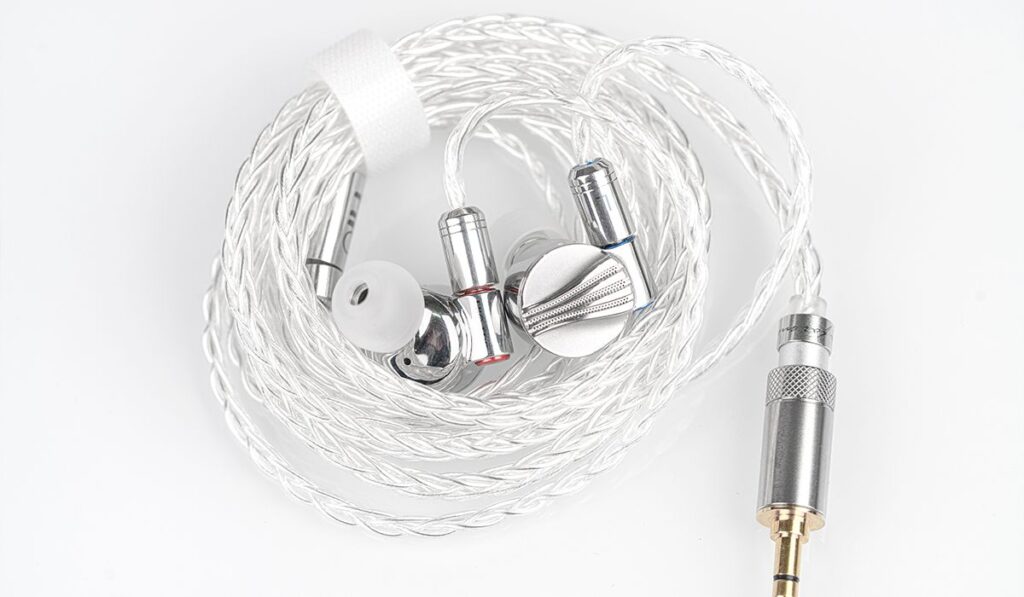
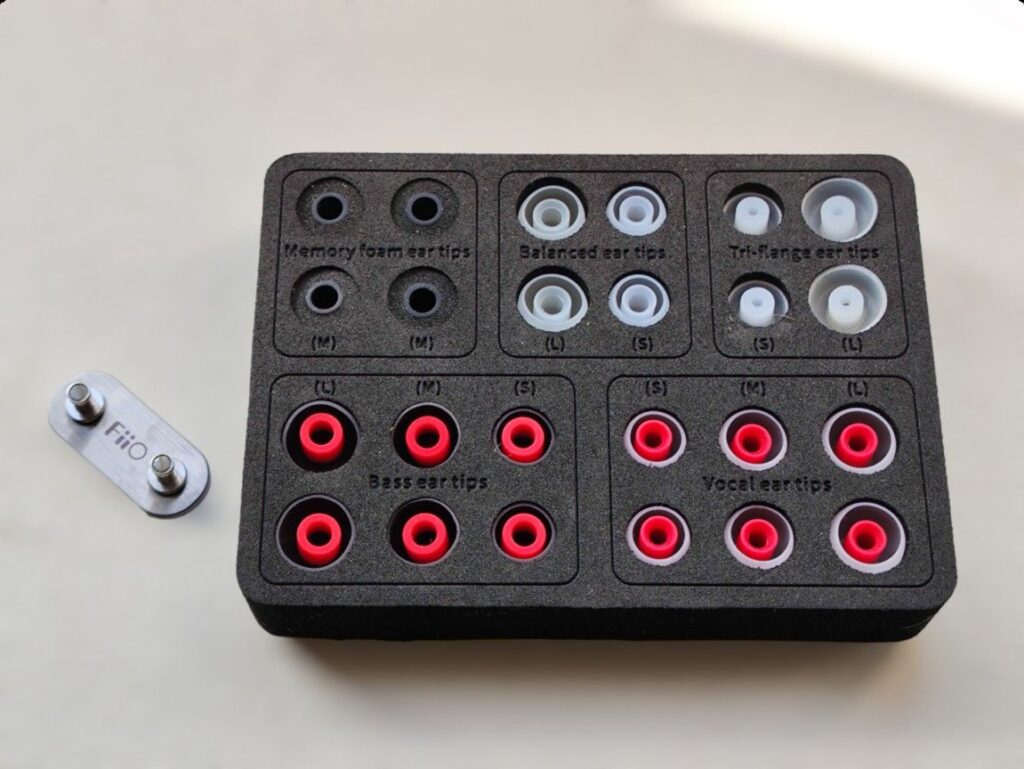
FiiO FD5 SPECIFICATIONS
- Driver: 12mm beryllium-coated diamond-like carbon (DLC) dynamic driver.
- Frequency response: 10 – 40000 Hz
- Impedance: 32 Ohm
- Sensitivity: 109db/1mW
- Cable: 8 strands of monocrystalline silver-plated copper cable
- Cable length: 120 cm
- Earphone connector: MMCX
- Cable terminations: interchangeable 4.4 mm TRRS Balanced, 3.5 mm TRS Single-Ended, and 2.5 mm TRRS Balanced
Check the price of the FD5 here:
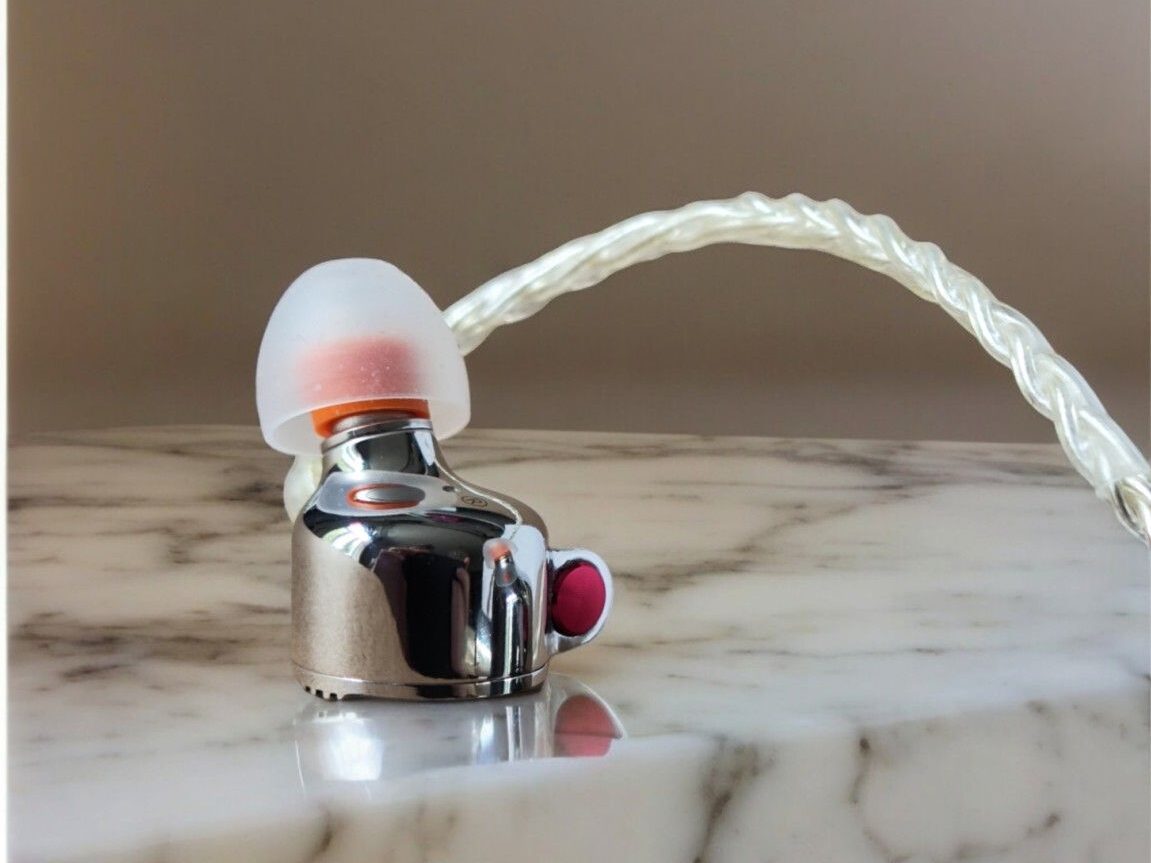
LISTENING IMPRESSIONS
Associated equipment: Topping A90 as amplifier and the RME ADI-2 DAC FS . The RME sounds excellent by itself, but it’s more practical for me to use the Topping.
Walk It Back by The National
On this indie rock song, the male vocals are very full and warm sounding. The presentation is warm and organic, well-rounded, with no hint of brightness, yet wonderfully detailed.
Keep Distance by Magnus af Uggla
This slow guitar-based jazz/rock instrumental sounds wonderfully warm and organic with the FD5. The midrange is delicious, and the bass is full. The treble is detailed but not very crisp or bright.
Rambling Man by Laura Marling
Once again, the midrange is the main star. The female vocals are full-sounding and warm; they sound natural and alive. The guitar, percussion, and backing band in general are also rendered in a very natural and organic manner.
Sunrise by Norah Jones
The bass is powerful and well-defined. The female vocals are truly magical here, and the guitar and the piano have just enough crispness.
Jambi by Tool
The bass is powerful; the intro guitars are warm-sounding but not as textured, aggressive, and crisp as I have heard them. The vocals stand out nicely.
As Before by Olga Konkova
The cajôn is punchy, the percussion snappy, the vocals delicious, and the piano gentle.
Young Vivaldi Violin Concerto RV 813 III by Ensemble Modo Antiquo
I think this sounds absolutely stunning with the FD5. The strings sound so natural and organic. There is a lot of detail, but it’s presented in a subtle way, not overly exaggerating anything. It just flows in a very natural-sounding way.
In the Mountains by Espen Eriksen Trio
The bass is very powerful and dominates the track. It is full-bodied and rounded; it is a bit bloomy. The piano is gentle, and the percussion is delicate. The sound stage is intimate, but the imaging is good.
It Could Be Sweet by Portishead
The FD5’s bass sounds quite thick and full. The vocals are beautiful as always, the percussion is detailed, but the treble is laid back. The soundstage is intimate.
Escape Route by Boris Blank
Again, the FD5 is warm and delicious, with a full bass, very present mids, and a smooth high end. I think this electronic track sounds very good, but if you are after a spacious and crisp experience, this is not necessarily your favorite IEM.
Brahms Symphony No. 2 – III by Paavo Järvi
The FD5 sounds surprisingly spacious with this symphonic piece, and the instruments are rendered with very natural timbre and great separation.
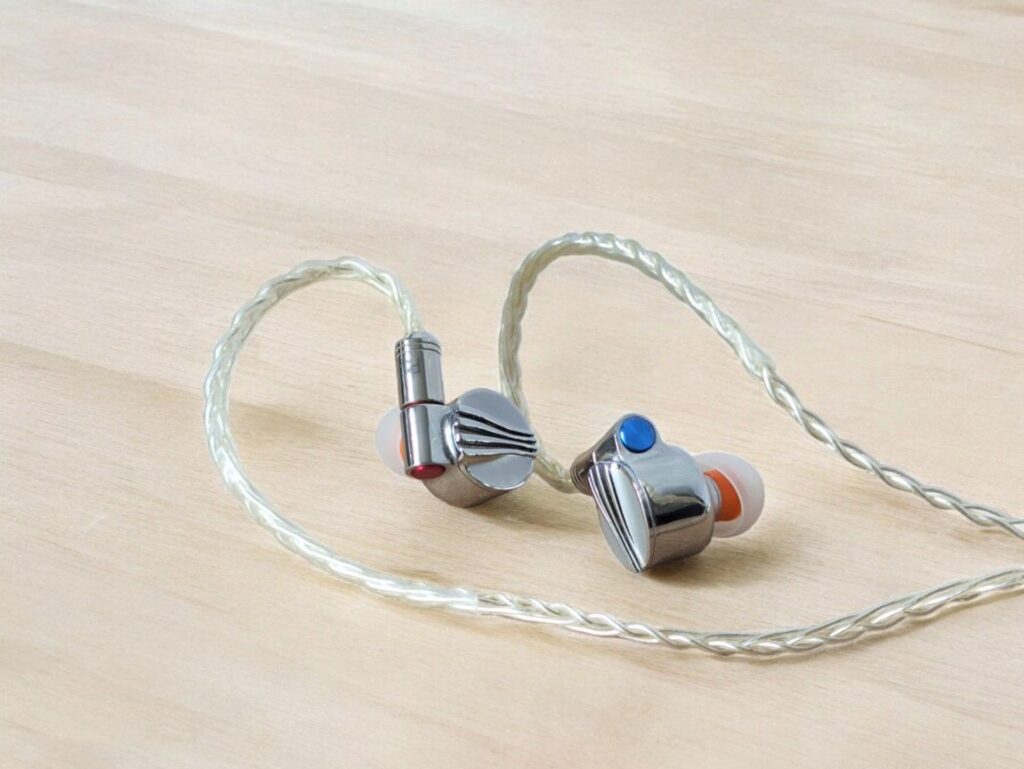
WRAPPING IT UP
Sound Signature
The FD5 is thick, warm, smooth, and lush, with more bass and midrange presence than treble.
Treble
The FD5 is smooth, liquid, and organic. It never gets piercing or too bright, but it still has plenty of detail.
Midrange
Personally, I find the midrange to be absolutely fantastic on the FD5. It is very present and sounds extremely natural and musical. The FD5 has a midrange that makes me think of headphone classics such as the Sennheiser HD650.
Bass
The bass is quite meaty with the FD5. It is full-bodied, warm, powerful, and has some bloom. It is not super tight, but I still find that it is well-defined and detailed.
Soundstage and Imaging
The FD5 has a relatively intimate sound stage. Orchestral music sounds quite open, but with intimate recordings, it sounds intimate. When it comes to imaging and depth, I find the FD5 to be very good.
Detail, Dynamics and Timbre
The FD5 delivers plenty of detail in a very liquid and organic manner. It also delivers great dynamics, with a high dynamic contrast both in terms of macrodynamics and microdynamics.
When it comes to timbre, the FD5 is rich, lush and organic, all along the frequency spectrum. I find that FD5 sounds extremely natural, but for the record, I am usually a fan of warm sounding earphones.
COMPARISONS
EA2000
The EA2000 is Simgot’s single-driver flagship. Like the FD5, it has a 12 mm dynamic driver. It’s not vented like the FD5, but instead uses a passive radiator.
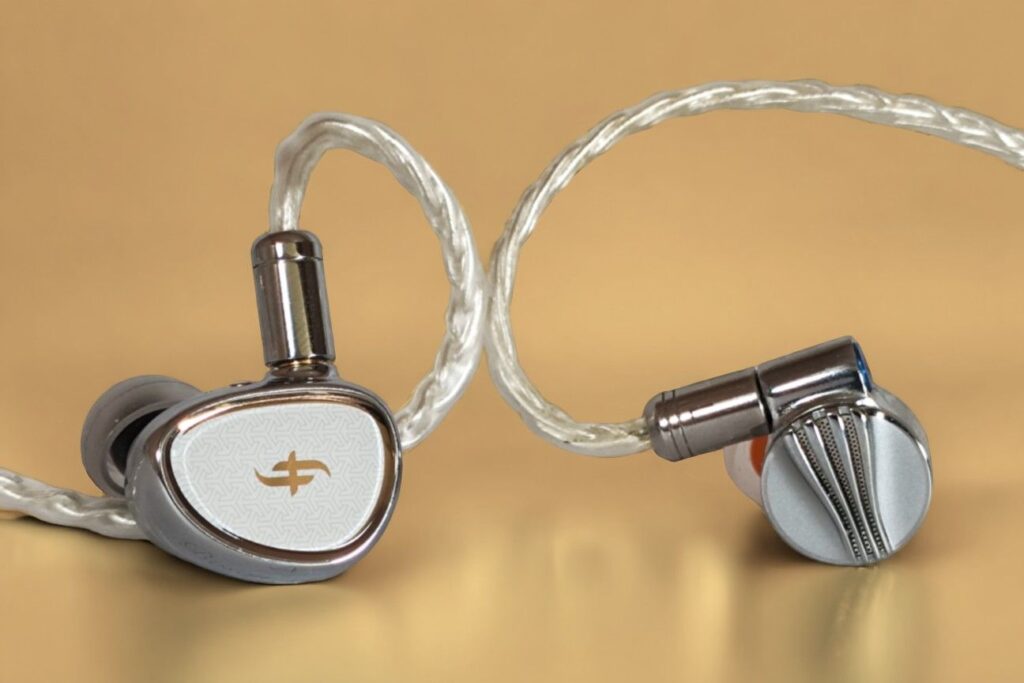
Sound wise, the EA2000 is brighter, with a crisper treble and a pronounced upper midrange. The FD5 has a fuller sounding midrange and stronger midbass presence, making it a warmer-sounding earphone.
They’ve both got a nice and open soundstage, but the EA2000 has a somewhat larger sound with more air, and the imaging is more precise. Layering is very good on both.
I tend to find them equally dynamic and detailed. However, the EA2000 puts the details upfront, while the FD5 has a more subtle presentation. They both sound very natural and organic, but in different ways. The FD5 is warmer and could be termed to sound more “musical,” while the EA2000 is a bit more “technical.”
Full comparison here
You can get the EA2000 here:
- Linsoul: Simgot EA2000
- Amazon: Simgot EA2000
FiiO FH5S
The FiiO FH5S is a multiple-driver earphone, with four drivers per side. There’s a 12mm dynamic driver for the bass and a 6mm for the midrange, both with a beryllium-coated diaphragm. The treble is handled by two Knowles TWFK-30017 balanced armature drivers. It also has three tuning switches with two positions each, but I personally only find use for two of the 8 possible combinations.
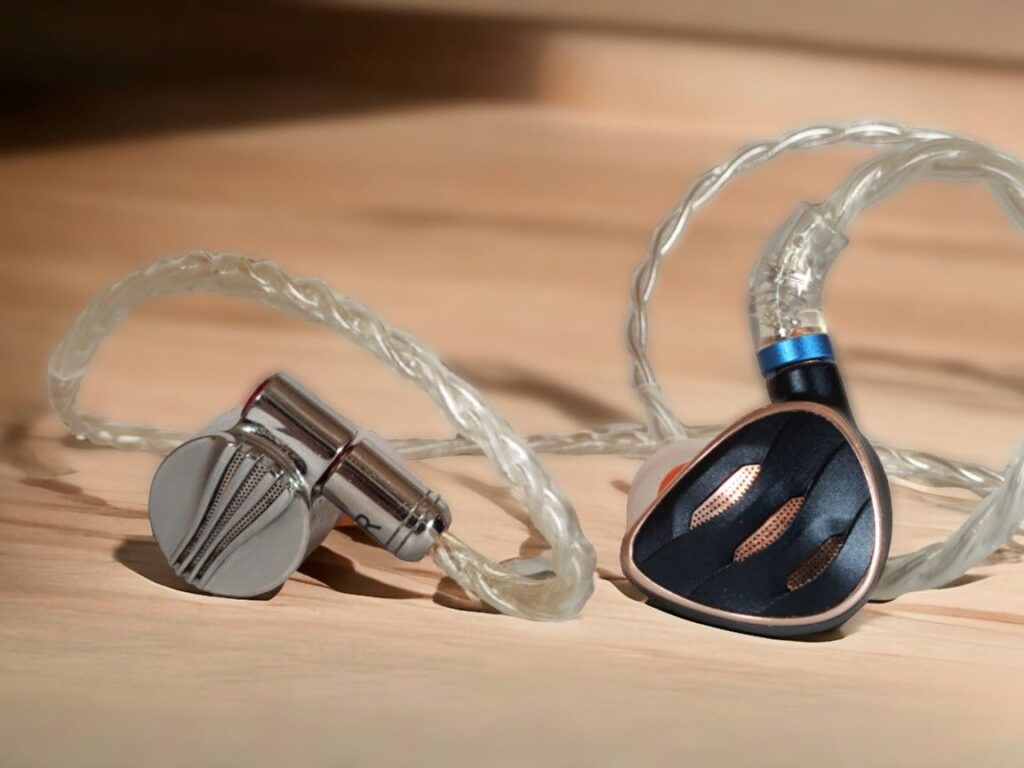
The FH5S and the FD5 have very different sound signatures. Where the FD5 is thick, warm, smooth, and lush, the FH5S offers crisper highs, a more textured midrange, and a tighter bass with less fullness.
The FH5S has a wider soundstage with a more airy sound. They’re equally detailed, but the FH5S offers more apparent textures and sounds a bit drier. Both offers great dynamics.
Full comparison here
You can get the FH5S here:
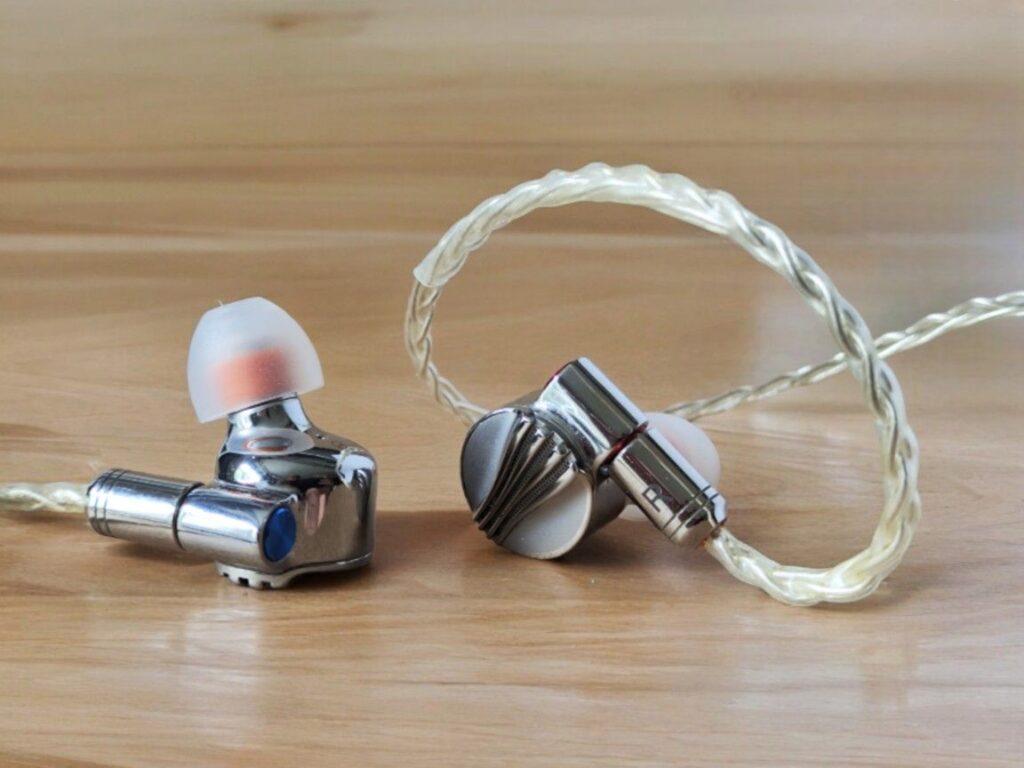
CONCLUSION
The FiiO FD5 delivers a full-bodied and punchy bass, warm and well-defined mids, and smooth, liquid highs. The soundstage is quite intimate, but the imaging is very precise with especially nice depth. The FD5 is also very dynamic and detailed in a nuanced and organic way. If that sounds great, you might consider grabbing one while you can. I am certainly glad I did.
You can get the FD5 here:
The FD5’s little brother can be found here: FD3 / FD3 PRO and FiiO’s budget single DD options are available here: JD1, JD3, FD11
Information on FiiO ‘s product lines:
Any purchase you make on Amazon or Linsoul with any of our affiliate links will give us a small provision at no cost to you.
We only get a provision for items that are not returned, so there’s no incentive for us to recommend something that’s not good.
Linsoul : Headphones, Earbuds, Wireless Earbuds, Desktop DAC/AMP, Portable DAC/AMP, Digital Audio Players,
Amazon: Headphones, IEMs, Headphone Amplifiers, Home Audio or Anything else.
.
If you enjoyed this article or other content on The Headphoneer, you might consider leaving a small donation to keep this website up and running. No donation is too small. Thanks for supporting us!
If you like our work please follow us on Instagram, Facebook and Twitter , it will help us grow. Sharing is caring 🙂


